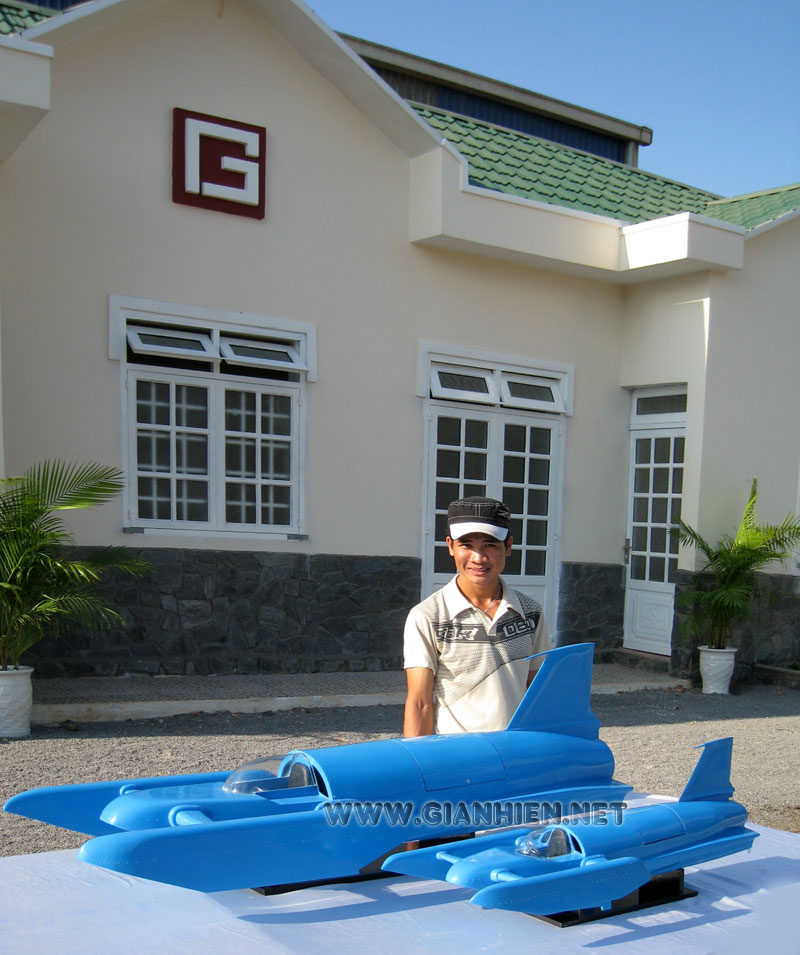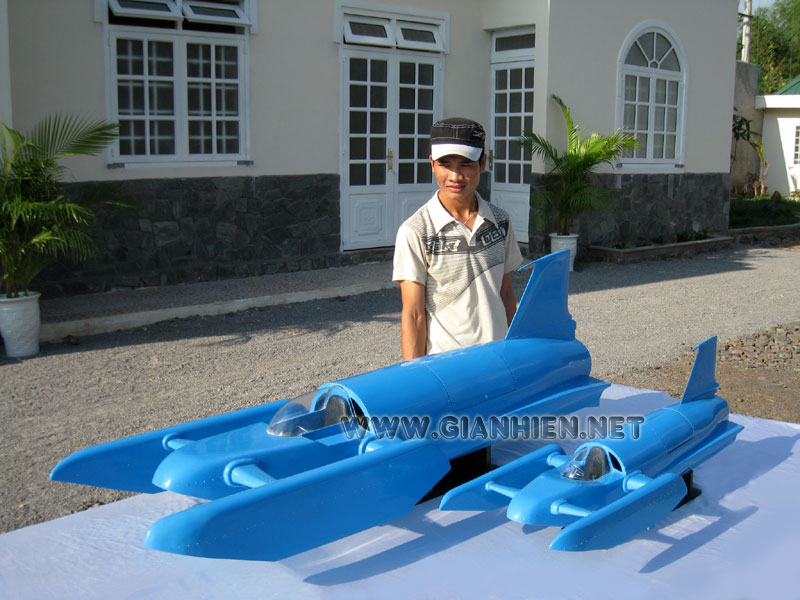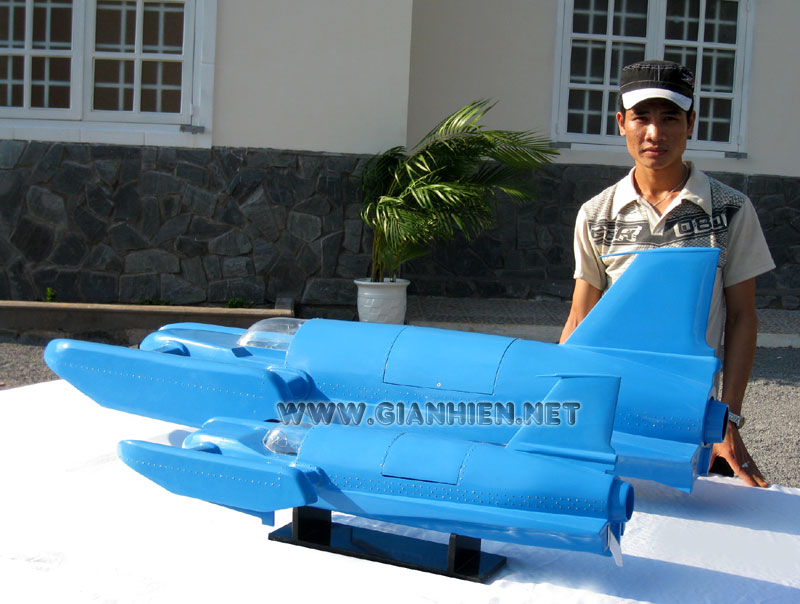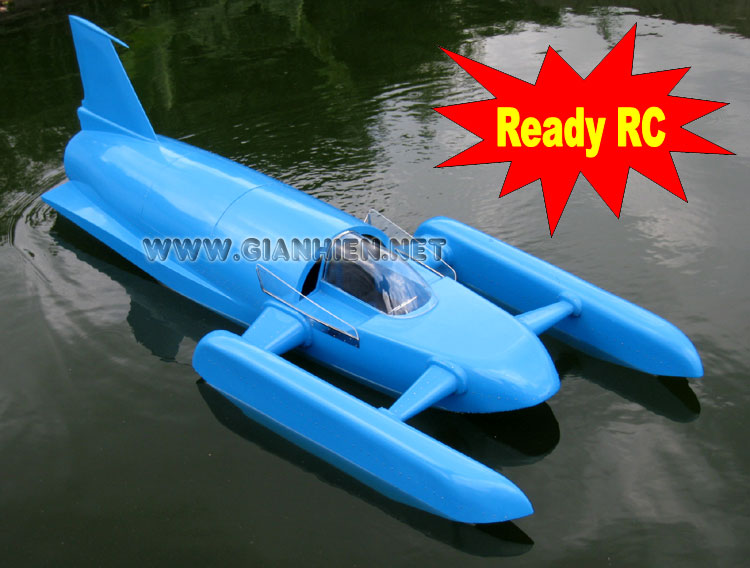|
HISTORY
In 1956, the world
land and waterspeed record holder, Donald Malcolm Campbell,
received a significant sponsorship deal from the Mobil Oil
company in New York. In July of that year, Mobil agreed to pay
$10,000, around £34,000 at today’s value, for an official
waterspeed record, and a further equivalent of £24,000 if it was
recorded officially in excess of 250mph.
The boat, Bluebird K7, was on a month-long display at the
Festival Gardens, Battersea, during August of the same year.
It must have been around this time that, for some reason
(presumably related to raising further funds and advertising
revenue) Bluebird’ was on show at the Mobil Garage on the Botley
Road, Oxford, near to the current site of PC World.
I was only seven at the time, but can remember my brother taking
me to the Bluebird roadshow and, surprisingly, we were even
allowed to sit in the cockpit of the boat, which was similar in
profile to a jet aircraft.
As one gets older, details of memory become vague, so a decision
was made a few years ago to write to the Oxford Mall to find out
if any other readers could remember the Botley Road display.
Fortunately, a reply came from Cyril Barrett, reflecting on his
own memory of sitting in the Bluebird, Cyril explained that his
friends visited the event on more than one occasion.
This confirmed my recollections at least, as the childhood
memory of sitting in the most famous speedboat in the world
certainly left a lasting impression.
In 1956 Donald Campbell was given further publicity when he was
featured on the TV show This Is Your Life. It was this TV
exposure that certainly helped win his much-needed sponsorship.
On the strength of this support, Campbell made a new attempt on
the water speed record on September 19 the same year at Coniston
Water, in the Lake District
The conditions were perfect and preparations were put in place
for the run. Through the first kilometre his speed was 286mph,
nearly 50mph faster than he had ever gone before.
This brought doubts that the lake might not be long enough to
allow sufficient distance at either end for Bluebird to slow
down after reaching such a high speed. His return run produced
problems that were to give an insight into what may have caused
the crash which killed him at Coniston, in 1967.
Riding through the wake created by the first run, Campbell
experienced dangerous instability in the craft.
Between 1956 and 1967, Bluebird barring modifications on a small
scale, remained the same basic machine. The main differences in
the outward appearance were the tail fin from a Folland Gnat Jet
Trainer aircraft (see illustrations) and internally the Gnats
Bristol Siddeley Orpheus jet engine.
January 4, 1967, began with a gathering of press photographers
and spectetors at Coniston Water, waiting for Bluebird’s new
record attempt which was timed to coincide with the Daily
Express Boat Show, due to open the same day.
Campbells enthusiasm to get the record attempt rolling is
recorded in David Tremayne’s book, Donald Campbell — The Man
Behind the Mask (Bantam Press, London: ISBN: 0593 0505B4).
There had been a long wait for conditions to be perfect and the
morning of January 4 was calm enough to proceed. The first run
went without too many problems and a top speed of 300mph was
achieved
Controversially, the use of a water brake, to enable the craft
to slow down enough from such a velocity, had created more than
the usual amount of disturbance on the surface of the lake. The
normal technique was to allow time after the first run to let
the water settle before making the second attempt.
It appeared that the wake was worse than could be detected
visually, and the instability created as a result caused the
boat to lift during the second run to such an extent that it
completely left the water flipped over backwards and plunged
into the lake, killing the pilot on impact.
Campbell and his Bluebird lay at the bottom of Coniston Lake for
over 30 years before being raised to the surface in March 2001.
Donald Campbell’s body was found in May that year and finally
given a proper funeral and burial place at Coniston on September
12 of that year. |






